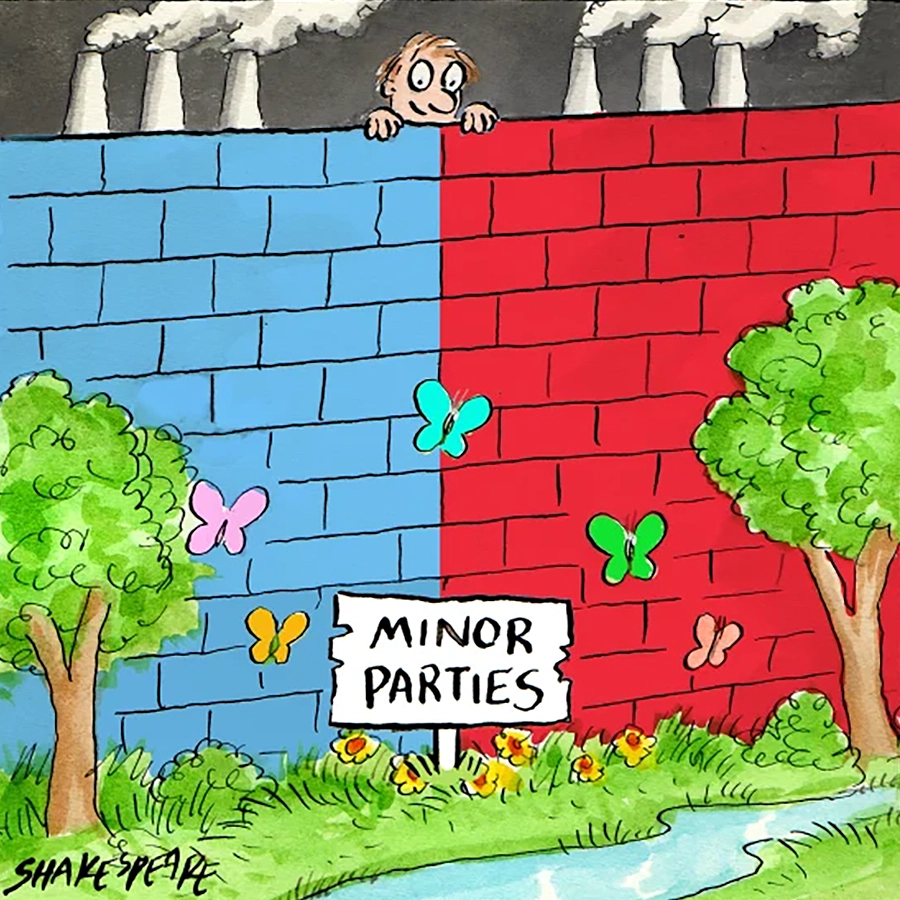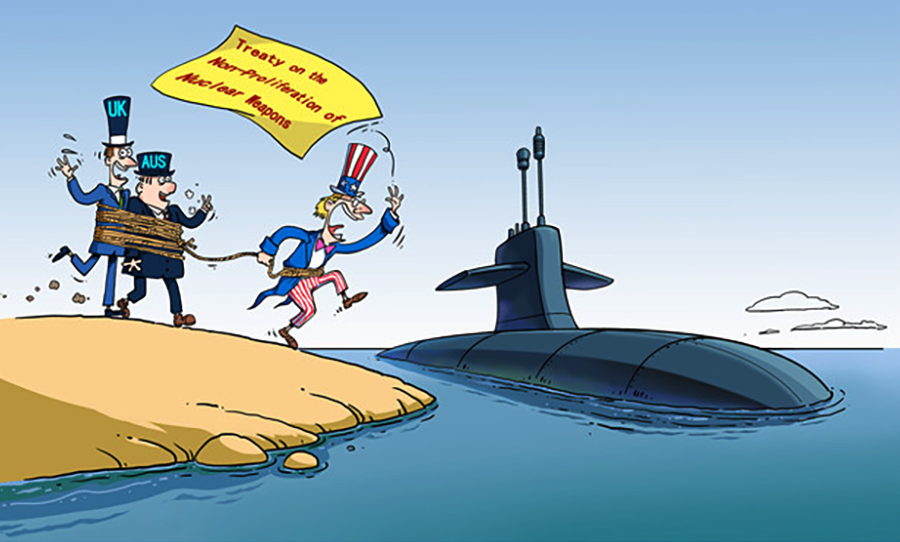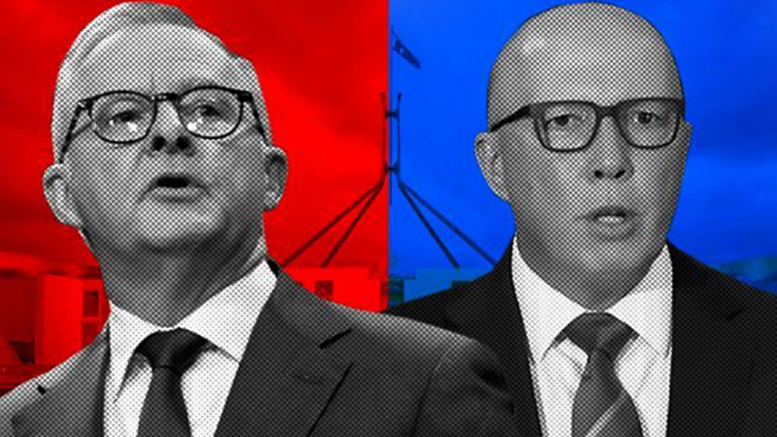Contributed by Joe Montero
Although most of our professional political commentators don’t like to talk about it, a political transformation is underway across Australia, just as it is happening across most of the western world and beyond. It may not yet be as acute here as elsewhere. This doesn’t make it any less real.
This transformation is the decline of the two-party system, fuelled by discontent over the performance of traditional political leaders. Voters feel betrayed. See a political elite serving the one percent at the expense of everyone else. This perception holds water because it has a basis in an economic reality experienced by most.

Our schools, hospitals, and other important infrastructure that contributes to our quality of life unravels. While the generosity handed over to the top end keeps on growing, the share for everyone else declines.
Meanwhile, the major players in the two-party system ignore the calls for change and tell us how well off we are because of them. The gulf between this presented scenario and reality grows and the system loses credibility. After all, aren’t our political representatives supposed to represent us? They don’t. This isa what Australia is starting to realise. Once the charade has gone, it’s easier to see that the political system is fixed to ensure nothing changes and it serves the one percent above all.
The most recent essential poll shows that approval of the performance of Anthony Albanese is at 51 percent. Remember this is for the incumbent Prime minister who routinely has the advantage, and when his counterpart Peter Dutton is even less popular at 42 percent. The poll really defines which one Australians think is worse than the other. If they had been asked whether what they had to offer matched what they thought was needed, there is a high probability that each would have scored much less.
The most important finding of the survey was that 54 percent hold that Australia is on the “wrong track.” Only 35 percent believe otherwise.
Take this for example. According to the government’s Institute of Health and Welfare, Australia spends about $242 billion on health every year. About middle level as a percentage of the population compared to other Western countries. The main difference is the way health service provision is distributed. Australia is among the worst in favouring the richer and disadvantaging the poorer. So much so, that today 6 out of 10 Australians, the majority, live with chronic illness and many of these without adequate and affordable support.

A key factor here is that the gap between real government spending on health and the needs of the community widening.
The Institute of Health and Welfare report adds that life expectancy has dropped for the first time in decades. This change might be only around 0.1 percent. But if continues, it will become far more significant. We may even fond that this is connected to the ongoing defunding of health services.
Little needs be aid about the cost of housing and other basic necessities. The impact is common knowledge, and no one can deny that the cost of living continues to rise, that the gap between prices and incomes continues to widen.
In addition to the list of bread-and-butter failures, there is the abysmal record on climate. The two-party system is failing miserably here too and doing so for the same reason. Service to the top end takes priority over dealing with an existential crisis.
Meanwhile, the Peter Dutton led opposition blasts off about nuclear power and Labor misses an opportunity to take advantage by saying as little as possible. The best explanation is that the energy policy difference is more about pace than direction.
To these bread-and-butter failures of the two-party can be added angst over Australia’s place in the world and the toxic of our relationship with the United States, which has imposed involvement in a series of wars, generated confrontation aimed against China, and syphoned off billions in taxpayers’ money, to be used on nuclear submarines and other military arrangements under the command of Washington.

Cartoon by Ma Hongliang
There is also increasing realisation about the economic power of United States interests within the Australian economy. Including being the major owners of the banking system, the mining industry, and more.
Similar situations in other countries are now having major impacts. The United States is heading for a presidential election between a terrible existing president and a kind of home-grown fascism with Donld Trump at its present figurehead. In Britain it’s the 4 July election looks like bringing the fall of Rishi Sunak and the rise of its own fascist element in shape of Reform and the hardly different Labour under Kier Starmer.
In France it’s the rise of Marine Le Pen’s National Rally (RN) party. In Italy’s Giorgia Meloni Force of Italy led government represents something similar It’s Vox in Spain, Enough in Portugal, Alternative for Germany, in Germany of course, and in Belgium it’s the Freedom Party. These are just some of the examples.
The losers across the board have generally been the discredited traditional political parties of the two-party system. The rise of the new fascism is a product of growing dissatisfaction and loss of faith in the political system.
No doubt Australia will see something like this before too long. The seed has already been planted.
The conditions that generate the new fascism inevitably begin to generate its antithesis. Other countries are experiencing the rise of a left alternative. This year’s European and French elections showed this. The European election produced a polarisation where it was the traditional parties of the two-party system that lost. The main exception was the German Greens. France saw arise of the right accompanied by the rise of the New Popular Front winning 28 per cent of the first-round vote. The Workers Party of Belgium has made considerable electoral progress this year and increased increasing their total of parliamentarians from 38 to 50. This adds to past achievements of others like Podemos in Spain.
Australia is set to move in a similar direction. But it will take its own unique form. The political polarisation being experienced in other countries will come to Australia. The early signs already exist, with a nationwide shift towards the greens and independents, and perhaps ushering in an era of new coalitions and minority governments.
This is the product of the growing gulf between the political system and the needs of Australia’s citizens. This will develop and maybe produce new political movements. It all depends on how we react to the situation.


Be the first to comment on "The decline of the two-party system is an Australian reality we better get used to"